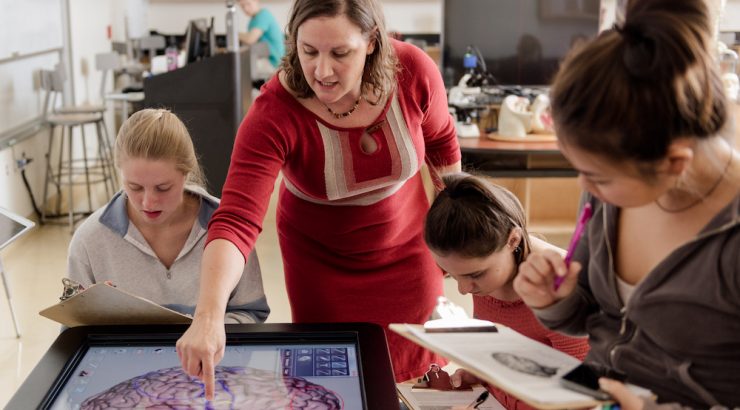
Crean College IETL Ambassador Provides Remote Teaching Resources
September 30, 2020
 Caroline Wilson, Associate Instructional Professor of Health Sciences, is the Institute for Excellence in Teaching and Learning (IETL) representative for Crean College. In her role as the college IETL Ambassador, Caroline has provided support and assistance in identifying and developing innovative models of excellent instruction for the last two years. When COVID-19 hit Chapman University, she quickly adapted to supporting Crean faculty with their transition to remote teaching. She also participated in the April Teaching Town Hall and described how she adapted Team-Based Learning™ approaches to provide online active learning experiences for the students.
Caroline Wilson, Associate Instructional Professor of Health Sciences, is the Institute for Excellence in Teaching and Learning (IETL) representative for Crean College. In her role as the college IETL Ambassador, Caroline has provided support and assistance in identifying and developing innovative models of excellent instruction for the last two years. When COVID-19 hit Chapman University, she quickly adapted to supporting Crean faculty with their transition to remote teaching. She also participated in the April Teaching Town Hall and described how she adapted Team-Based Learning™ approaches to provide online active learning experiences for the students.
In August, she led summer trainings for faculty on how to use Canvas to create engaging online learning in their courses. She put ideas and resources into the Canvas Den so faculty members could access them at any time and recorded a webinar to share instructional aids to help instructors engage students. In her trainings, Wilson encouraged the use of online tools such as such as videos, surveys, and polls. She also collected ideas from colleagues, like David Pincus, who provided information on advanced techniques utilizing virtual reality and augmented reality tools for office hours or virtual classes.
According to Wilson, one of the most important strategies for creating a great online environment is the orientation strategy. How can students get to know you when you are not interacting in person? Caroline shared it’s important to set the tone early and reach out to students well before class to orient them to the structure of the course. She emphasized the importance of letting students know what is going to be flexible given the diversity of student experiences at this time.
Wilson’s top tools for online engagement include:
- Using break-out rooms
- Using online tools for group work such as google docs
- Addressing students by name and calling on them
- Turning the camera on (and understanding individual student reasons why it may not be feasible)
- Polling and using online tools to help students apply concepts
- Considering scenarios for when to use asynchronous versus synchronous learning
Wilson points out that although there is a learning curve with remote teaching, there are many benefits. For one, it introduces students to innovative technology and software they may use later in their careers. It also opens up many more opportunities for guest speakers to drop into class virtually. For example, Bertil Hille (University of Washington) is popping into class to kick-off the new Neuroscience Minor on Oct 14, 2020 at 1 pm. He will talk about his fifty-year career in science and his research on ion channels and lipid rafts. For more information on this event, please contact Caroline Wilson, cawilson@chapman.edu.

